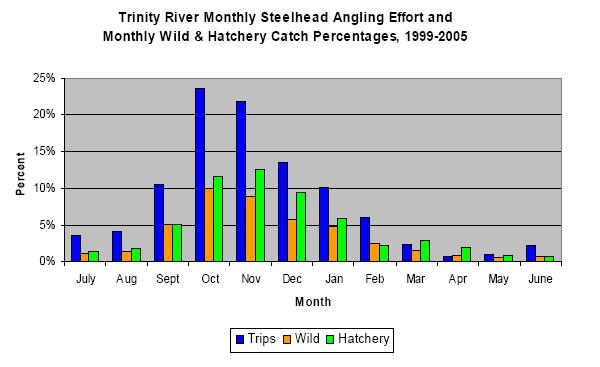Trinity River
Steelhead Poster
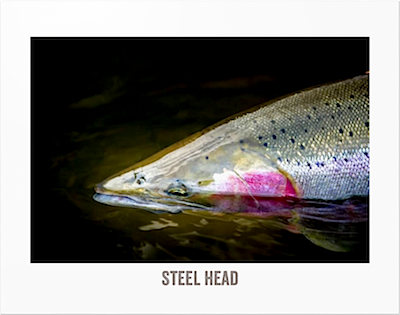

Premium Poster Print of STEELHEAD. Poster measures 22" x 28" on a matte finish. High quality printing provides optimized brightness and sharp detail. Made in USA.
Please allow for three to five business days for order to be processed. You will be notified by e-mail once the poster has been packaged and shipped to the address in the order.
Directions
From Redding From Interstate 5, take Highway 299 going East. Drive about 30 miles (a couple miles before reaching Douglas City) until you reach Indian Creek. (Refer to detailed map here.)
Better Than Average Run
From Trinity River Hatchery - Feb 2009 So far, we're having a pretty decent year, according to Wade Sinnen, Associate Biologist for the Trinity River Project. To date, we've trapped 3,458 adult fall-run steelhead compared to 1,918 last year during the same time period. Of these trapped fish, more than 95 percent were hatchery-born steelhead. The run-size estimate for 2009-10 is between 22,000 and 28,000, while the average run-size over the last 10 years has been right around 23,000, but last years estimate was just above 15,000.
Improved ocean conditions, timely rain, and simply more water are all factors in this years larger return, said Sinnen.
The egg-take goal for the hatchery is two million eggs, which takes roughly 571 female steelhead to achieve. Each female will produce right around 3,500 eggs. Eight-hundred-thousand yearlings are then released back into the river the following March.
Trinity River Steelhead Fishing
The Trinity River is the longest tributary of the Klamath River running approximately 130 miles long. It drains an area of the Coast Ranges, including the southern Klamath Mountains.

Its headwaters start along the west side of the Trinity Mountains and eventually drains into Trinity Lake formed by the Trinity Dam. From there the water runs immediately into the smaller Lewiston Lake at Lewiston. From the reservoir it flows past Weaverville and along the southern side of the Trinity Alps. The Trinity River gains volume and velocity as it is fed and nurtured by 41 additional tributaries and its three secondary rivers - the North Fork, the New River and the South Fork.
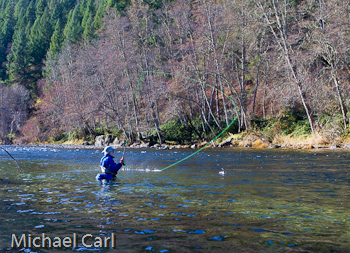
Since completion of the Trinity and Lewiston Dams in 1963, as much as 90 percent of that water runoff has been diverted from the Trinity River Basin to the San Luis Reservoir. From there it goes principally to the Westlands Water District, but also to a limited number of other water users in the Central Valley, mostly subsidized agriculture, and a few urban users.
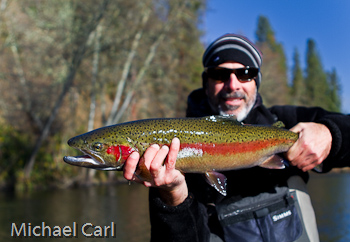
The Trinity River supports some of the last remaining and largest Winter and Summer run Steelhead, Chinook Salmon , and Coho Salmon populations in California. Trinity Coho Salmon now are listed under the Environmental Protection Act as threatened and Steelhead and Fall Chinook Salmon are candidates for listing.
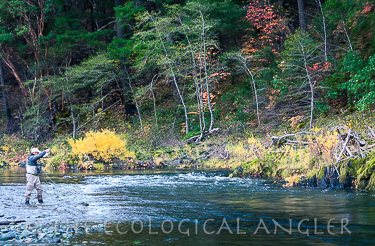
The Trinity fishery includes resident brown and rainbow trout, wild steelhead, chinook salmon, and the threatened Fall Coho Salmon. The Trinity River continues to support strong native fish stocks, but in numbers that are minuscule compared to those which existed prior to completion of Trinity and Lewiston Dams. Native anadromous fish returning to the river by the early 1990's declined by as much as 80 to 90 percent since construction of the dams.
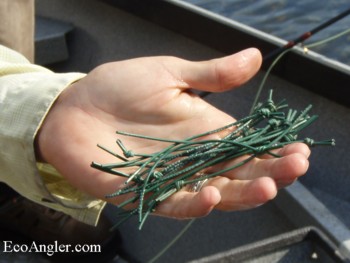
Klamath-Trinity River Steelhead Runs
Steelhead enter the Klamath-Trinity Rivers throughout most of the year. Summer-run adults enter the stream between May 1 and October 30 (1) and hold in the river for several months before spawning. Summer-run steelhead commonly reach Lewiston (RM 112.0) by early June and continue to arrive through July. They enter major tributary streams by August and remain in deep pools until they spawn in February (1). Winter-run steelhead enter the river between November 1 and April 30 and hold in relatively high-velocity habitats, such as riffles and runs; they spawn in April and May (1). Summer- and winter-run steelhead are, therefore, temporally and spatially isolated from each other. They do not interbreed because summer-run adults generally use areas that are farther upstream than areas used by winter-run adults (1).
Graph Showing the Monthly Distribution of Steelhead and Angling Activity on the Trinity River
